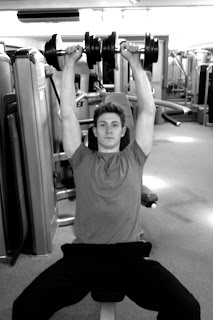"We are different, in essence, from other men. If you want to win something, run 100 meters. If you want to experience something, run a marathon."
Emil Zatopek, 1952 Olympic Marathon gold medalist
There is no two ways about it, training for a marathon is not easy. It requires time, effort and dedication.
However, it doesn't matter whether you run 20 miles a week or haven't been for a jog in a length of time you'd rather not admit, you can successfully train for a marathon.
To make it more simple, I have split the training into the following three categories; exercise, nutrition and motivation, each as important as the other.
As said it my previous fitness article, Lean, Ripped & Stripped, it is important to create yourself a realistic workout. Don't plan to run five miles every night if you go to work every day or haven't trained in a year or so. Realistic work outs achieve results and more likely to be stuck to.
When training for a marathon, the key is to have a rather easy training session throughout the week and one heavy run on a set day.
I've created a rough 28 day schedule which a beginner could base his/her marathon work out on.
Nutrition is something people easily forget when it comes to training, whether it be for a marathon or just getting a good body.
Food; carbohydrates are what provide runners with energy, so particularly on work out days, carbs should be about 60% of your calorie intake and protein and unsaturated fats should take up the rest. Foods such as pasta, dried fruit and nuts, fresh fish and lean meats are all good options.
Drink; everyone knows water is vital in maintaining a healthy body. When you run, you'll undoubtedly sweat, so you'll need to drink more than you would on an average day. Consume at least two litres of water a day. Green tea is also beneficial to the system, try starting your day with a cup.
Vitamins; grab yourself a bottle of multi-vitamins and take one each day. Iron helps transporting oxygen in blood, vitamin C is good to maintain healthy bones, joints and skin and calcium maintains strong bones. All of these are good for marathon trainers.
I know how easy it is to lose motivation when it comes to working out. "I'll just have tonight off, I've had a long day" or "Well I don't want to miss Eastenders...".
I've got something very unfortunate to tell you, missing one work out will lead to another, and another, and eventually you'll give up.
It is important to try and maintain your motivation, keep your eye on the goal. Set a picture of previous marathon winner as your phone background, make a poster of the best ways to train and put it at the end of your bed, let your friends and family know what you're doing and make sure they keep check of what you're doing... all these things help.
There are some motivational quotes that may just help you make that work out session you don't really want to do:
"Pain is temporary. It may last a minute, or an hour, or a day, or a year, but eventually it will subside and something else will take its place. If I quit, however, it lasts forever." - Lance Armstrong
"Mental will is a muscle that needs exercise, just like muscles of the body." - Lynn Jennings
"To uncover your true potential you must first find your own limits and then you have to have the courage to blow past them." - Picabo Street
"If you aren't going all the way, why go at all?" - Joe Namath
"I hated every minute of training, but I said, 'Don't quit. Suffer now and live the rest of your life a champion.'" - Muhammad Ali
Marathons are on regularly, to see upcoming marathons and half-marathons, have a look at the full list.
Marathons are on regularly, to see upcoming marathons and half-marathons, have a look at the full list.
















